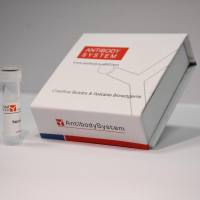Genome-Wide In Vivo Cross-linking of Sequence-Specific Transcription Factors
互联网
互联网
相关产品推荐

UBQLN1/UBQLN1蛋白Recombinant Human Ubiquilin-1 (UBQLN1)重组蛋白Protein linking IAP with cytoskeleton 1;PLIC-1;hPLIC-1蛋白
¥2328

InVivoMAb 抗小鼠 CD274/PD-L1/B7-H1 Antibody (10F.9G2),InVivo体内功能抗体(In Vivo)
¥2700

ZBP1/ZBP1蛋白/DNA-dependent activator of IFN-regulatory factors;DAI;Tumor stroma and activated macrophage protein DLM-1蛋白/Recombinant Human Z-DNA-binding protein 1 (ZBP1)重组蛋白
¥69

CEACAM6/CEACAM6蛋白Recombinant Human Carcinoembryonic antigen-related cell adhesion molecule 6 (CEACAM6) (Active)重组蛋白(Non-specific crossreacting antigen)(Normal cross-reacting antigen)(CD66c)蛋白
¥1248

Protein Quantification Kit, wide range(C5075)-100T/500T
¥200
相关问答

